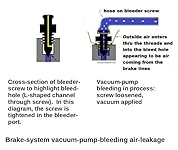









Ready to go? Add this product to your cart and select a plan during checkout. Payment plans are offered through our trusted finance partners Klarna, PayTomorrow, Affirm, Afterpay, Apple Pay, and PayPal. No-credit-needed leasing options through Acima may also be available at checkout.
Learn more about financing & leasing here.
30-day refund/replacement
To qualify for a full refund, items must be returned in their original, unused condition. If an item is returned in a used, damaged, or materially different state, you may be granted a partial refund.
To initiate a return, please visit our Returns Center.
View our full returns policy here.
Color: B black
Features
Manufacturer: HTOMT
Brand: HTOMT
Model: htomt-brake
Item Weight: 1.81 pounds
Product Dimensions: 7.08 x 7.08 x 6.69 inches
Country of Origin: China
Item model number: htomt-brake
Manufacturer Part Number: htomt-brake
Date First Available: June 23, 2019
